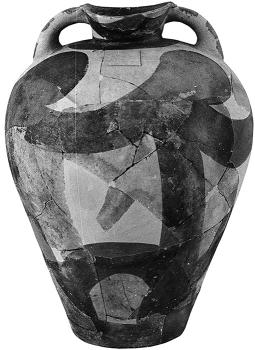American Journal of Archaeology | The Journal of the Archaeological Institute of America
You are here
The Rise and Fall of the Transport Stirrup Jar in the Late Bronze Age Aegean
January 2016 (120.1)
The Rise and Fall of the Transport Stirrup Jar in the Late Bronze Age Aegean
It is generally accepted that Cretan transport stirrup jars were the preferred bulk liquid transport container of the Late Bronze Age Aegean, but the reasons behind their invention, relatively rapid dissemination and widespread use, and sudden disappearance are not well understood. To explain the rise and fall of the transport stirrup jar, this article offers a quantitative comparison of the distribution and production of Cretan transport stirrup jars in relation to the amphora, the other major transport container on the island, from the Middle Minoan II to the Late Minoan (LM) IIIC period. Based on these data, it seems that the mode of production and distribution patterns remained relatively consistent for amphoras, but production of the transport stirrup jar fluctuated greatly, rapidly reaching an apex during the LM IIIB period. In the LM IIIC period, however, the production and distribution patterns of both shapes changed, and the amphora was reestablished as the dominant transport container. I suggest that the comparatively short lifespan of the transport stirrup jar may be due to political intervention in the LM IIIA2–B periods. This article therefore contributes to our understanding of the sociopolitical underpinnings of changes in broad ceramic trends visible in the archaeological record.
The Rise and Fall of the Transport Stirrup Jar in the Late Bronze Age Aegean
By Catherine E. Pratt
American Journal of Archaeology Vol. 120, No. 1 (January 2016), pp. 27–66
DOI: 10.3764/aja.120.1.0027
© 2016 Archaeological Institute of America


